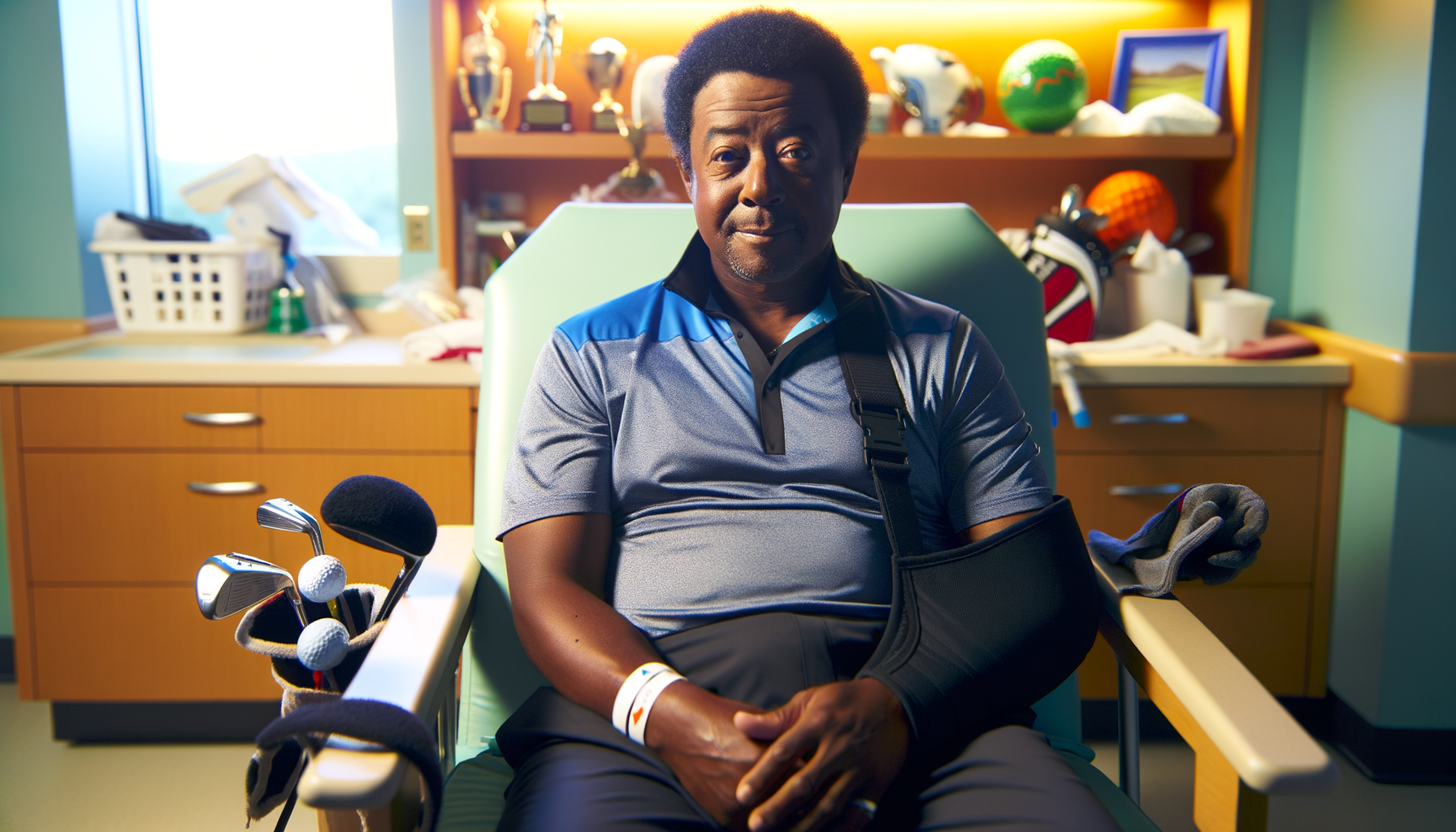Tiger Woods Undergoes Successful Back Surgery Amid Comeback Challenges
Tiger Woods has had successful lumbar disc replacement surgery after a back injury setback, raising questions about his return to professional golf.

By Editorial
Tiger Woods faces fresh injury setback with back surgery
Tiger Woods, the iconic 15-time major champion, has recently undergone successful lumbar disc replacement surgery to address persistent pain and mobility issues in his lower back. This operation, performed in October 2025 at the Hospital for Special Surgery in New York, marks the second major back procedure Woods has had in just over a year and the seventh throughout his illustrious career.
Woods' decision to have the surgery follows medical scans revealing a collapsed disc at the L4/5 vertebrae, disc fragments, and a compromised spinal canal. In a public statement, Woods expressed relief and optimism about the surgery, stating, "I already know I made a good decision for my health and my back." Despite this success, there remains uncertainty around his rehabilitation timeline and potential return to competitive golf.
Injury history and impact on Woods' career
The surgery represents a significant hurdle in Woods' ongoing struggle to maintain his place in professional golf, especially after his severe car crash in February 2021 which caused career-threatening injuries. Since then, Woods has only made 11 competitive PGA Tour starts, showing glimpses of his former brilliance but hampered by physical limitations.
In 2024, Woods completed a full major tournament schedule for the first time in five years, although his performances indicated the challenges he faces. While he made the cut at The Masters, finishing last among those who advanced to the weekend, he missed the cut at the other three majors. His opening-round 79 at The Open in July 2024 was a clear indication of his ongoing struggles with form and fitness.
Recent setbacks and missed competitions
Following the 2024 Open, Woods' appearances on the PGA Tour have been limited. Notably, he participated alongside his son Charlie at the PNC Championship in December 2024, where he was permitted to use a golf cart due to his physical condition. He also took part in TGL matches at Jupiter Links Golf Club, further demonstrating his desire to stay connected to competitive golf despite setbacks.
Woods had planned a comeback at The Genesis Invitational earlier in 2025 but withdrew following the death of his mother, which compounded the emotional and physical toll on the golfer. Shortly after, he suffered another major injury—a ruptured left Achilles tendon sustained during training—which led to him missing the entire 2025 major season. This injury prevented him from participating in the Hero World Challenge, an event he hosts in the Bahamas and has been a fixture on his schedule.
What lies ahead for Tiger Woods?
As Woods approaches his 50th birthday in December 2025, he becomes eligible to compete on the PGA Tour Champions, a senior circuit for professional golfers aged 50 and above. This opens new avenues for competitive play that may suit his current physical condition better. However, his limited recent playing schedule has seen his world ranking drop outside the top 2,000, signalling the challenges he faces in returning to elite-level golf.
Whether Woods will participate in upcoming events like the PNC Championship remains uncertain. His fans and the golf community at large are eager to see how his recovery progresses and if he can once again compete among golf's best.
The broader context of athlete injury management
Woods’ journey highlights the physical demands and risks elite athletes endure, particularly those with long careers. Managing injuries, especially chronic ones like back problems, requires a nuanced approach balancing surgery, rehabilitation, and mental resilience. His experience contrasts with other sports figures, such as those discussed in our article on Jacob Bethell’s reflections on his England summer and future ambitions, which shows how athletes adapt to setbacks and plan for the future.
Furthermore, Woods’ situation underlines the importance of modern medical advancements in sports injuries. The lumbar disc replacement he underwent is a sophisticated procedure aimed at preserving mobility and reducing pain, allowing athletes to extend their careers. Yet, the road to recovery remains complex and uncertain.
Conclusion: Tiger Woods’ resilience and the road ahead
Tiger Woods’ recent back surgery represents both a setback and a beacon of hope. While it confirms the physical challenges he faces, it also shows his determination to continue battling adversity. His career has been marked by remarkable highs and significant obstacles, making his journey a compelling story of resilience in sport.
As Woods navigates his rehabilitation, fans and observers will watch closely to see how this legendary golfer adapts to the evolving demands of his body and sport. His legacy, already cemented by 15 major titles and 82 PGA Tour wins, will undoubtedly inspire many, regardless of what the immediate future holds.
For continued updates on sports injuries and athlete comebacks, explore our coverage including latest football transfers and injury updates, which provide insights into how top athletes manage their careers amid challenges.
Related topics
Editorial
Sports expert at SportsScoop
Specialist in sports analysis and journalism
Related articles
Want to read more?
Explore our comprehensive collection of sports articles and analysis, or contact us for more information.



